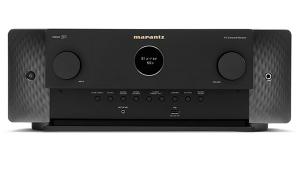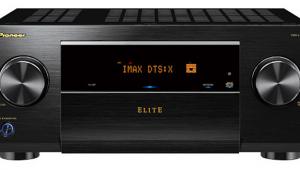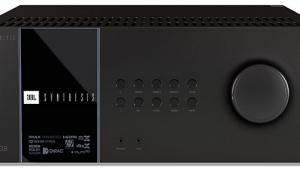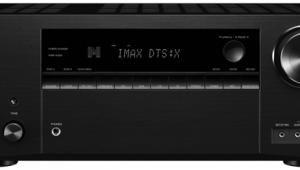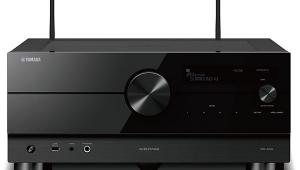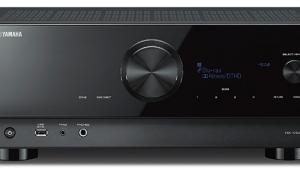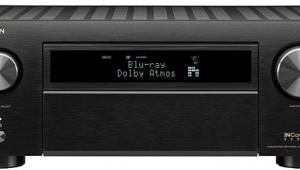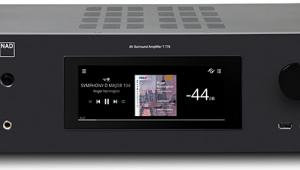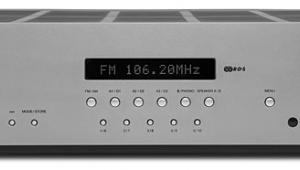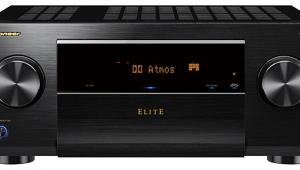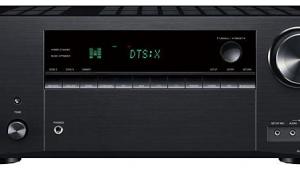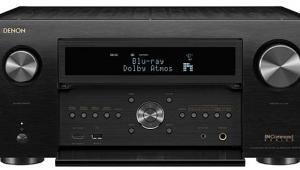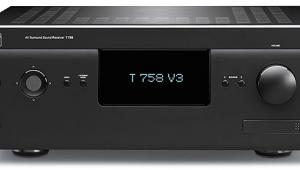Pioneer Elite SC-95 A/V Receiver Review Page 2
 Moving on to film sound, I quickly determined that the SC-95 aced my rotation of torture scenes (the audio, not the actors!) from movies such as The Fugitive and Master and Commander: The Far Side of the World, with clear, intelligible dialogue, appropriately dynamic music, and well-presented effects. This allowed me to advance to the main event: full 5.1.4-channel Atmos. I began with Dolby’s Atmos demo disc, in particular the “Leaf” trailer. This had wowed me on Atmos’ debut, and it wowed me again via the Pioneer, with its preternaturally lifelike bubble of ambience and overflying birds.
Moving on to film sound, I quickly determined that the SC-95 aced my rotation of torture scenes (the audio, not the actors!) from movies such as The Fugitive and Master and Commander: The Far Side of the World, with clear, intelligible dialogue, appropriately dynamic music, and well-presented effects. This allowed me to advance to the main event: full 5.1.4-channel Atmos. I began with Dolby’s Atmos demo disc, in particular the “Leaf” trailer. This had wowed me on Atmos’ debut, and it wowed me again via the Pioneer, with its preternaturally lifelike bubble of ambience and overflying birds.
I’m not much for sword ’n’ sorcery, but because Atmos-equipped Blu-rays of Game of Thrones had arrived on my doorstep, I quickly got sucked into the Westeros vortex (a little nudity doesn’t hurt, neither). HBO’s mashup of The Tudors and Conan the Barbarian, with plot lines lifted from I, Claudius (with a tablespoon of Dallas), blurs the production-value line between TV and movies. GOT ’s Atmos soundtrack is less wow-ified than I’d expected, but there are scenes like the tower fight in episode 1 (chapter 5) that showed off Atmos’ value—more worthy in ambience re-creation than gee- whiz flyovers, in my estimation—and the SC-95 to excellent advantage. The new Dolby Atmos soundmark even more so.
The SC-95 offers the streaming audio options we’ve come to expect on midrange-and-up receivers today. Pioneer contents itself with just two pay services, Pandora and Spotify, along with free internet radio via the vTuner interface, and media-server hookup via DLNA or Windows Play To (Win 8.1-certified). Via my Mac OSX–based TwonkyMedia software server, the new receiver cheerfully played every file format I tossed its way, including MP3, AAC, WAV, AIFF, and FLAC. The SC-95 also seamlessly played my growing collection of DSD files (DSDs have tripped up a couple of streaming receivers I’ve tried in the past year), sounding great in doing so via either wired-Ethernet or Wi-Fi linking to my home network. All was not beer and Skittles, however. On a couple of occasions, the Pioneer locked up during DLNA playback, requiring a cold reboot, unplugged, to recover. This seemed to occur when switching inputs from a live-playing DSD file, but the sequence of trying to re-create it deliberately was so laborious and haphazard that I eventually gave up and put it down to one of those things. Nor can I say, definitively, that my DLNA server wasn’t a contributing factor.
I confirmed Bluetooth playback from my iPhone—no problem. AirPlay: ditto, and the Pioneer obligingly switched automatically to its wireless input, requiring no setup (other than a viable wireless network) to work. I also messed about with the Pioneer’s video scaler, which comes with a couple of interesting options, though since I’m not as yet 4K’d on the display side, I can’t speak to its ultimate scaling quality. (I did discover that, for unknown reasons, my admittedly aged Samsung LCD set would not sync to the Pioneer’s 1080p-scaled signal, but it displayed its 1080i output just fine.)
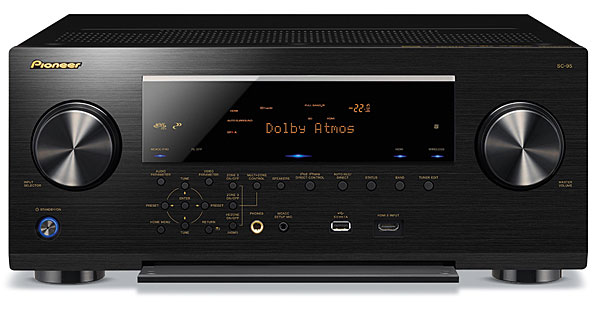
The un-illuminated remote supplied with the SC-95 is familiar from several previous Pioneer models. With small, tightly spaced buttons and generally low-contrast lettering, it’s not my favorite, but it’s sensibly laid out and usable nonetheless. Happily, Pioneer also offers free control apps for both iOS and Android. The iOS version of the latest, iControlAV5, is a well-conceived and occasionally whimsical but quite powerful controller. In addition to the usual parameters of volume, input and mode selection, and so on, this incorporates quite comprehensive zone control, Pioneer’s too-cool four-axis audio balance commander (which involves a rolling ball), individual channel level trims, control over the SC-95’s video converter/scaler, and access to all of its many “sound enhancement” functions, such as digital-audio upconverting, Pioneer’s Sound Retriever-AIR processing, and DNR. And, of course, it lights up in a dark room.
To the usual two-zone multiroom facilities Pioneer adds an HDZone option, with a dedicated HDMI output for a (stereo) HD second room (though for longer runs, you’ll have to add your own HDMI extender). And there’s enough packed into the iControlAV5 app, including its multiroom-control pages, that with an obsolete smartphone (and who doesn’t have one?) or a modest investment in a Craigslist previous-gen tablet, an SC-95 owner with a multiroom setup could have a pretty snazzy touchscreen system for little more than pennies.
Pioneer’s new SC-95 is fairly typical of upper-range A/V receivers today—which is to say, very flexible, substantially powerful, and frankly quite complicated. But beyond those bare facts, and the excellent nine-channel amplification, its many, many features seemed somehow more than usually accessible, and its especially attractive iOS control app raises its likability quotient considerably.
